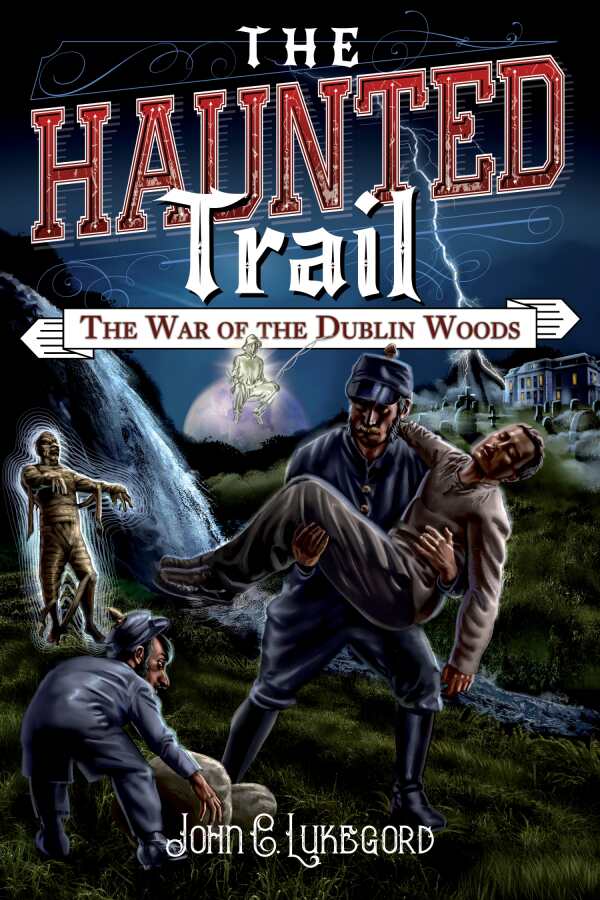
The Haunted Trail
The War of the Dublin Woods
The Haunted Trail is the product of an urgent sort of inspiration.
The Haunted Trail: The War of the Dublin Woods by John C. Lukegord is a short suspense novel set in the late nineteenth century. Full of intrigue and the supernatural, the plot centers on one man’s effort to thwart a powerful mummy that has woken up after many dormant years. It is a novel full of violence, intrigue, and crisscrossing narrative threads.
At the start of The Haunted Trail, a man who is fleeing for his life from an angry mob learns from his brother’s ghost that in order to save his home country, he must steal a clover from a deadly mummy that resides nearby.
Several corpses are soon discovered surrounding a guillotine. A band of policemen attempt to sort out what is happening. The mummy turns out to have been given its power, in the form of the clover, by one of two factions of interstellar beings who turned up in Egypt centuries prior.
There is a certain kind of glee to be found in the way in which The Haunted Trail ups the ante on itself, first with the intervention of the protagonist’s brother’s ghost, then with the introduction of a mummy, followed by the background on the mummy, which involves intergalactic warfare.
Every scene, it seems, introduces another layer to the novel, or another character or group of characters who are thrown into the mounting confusion and bloodshed. It is a novel that appears to consent to every avenue of storytelling that is available to it, and there is something satisfying in that. Its momentum is undeniable.
On the other hand, when a novel takes as many unexpected turns as this one does, it seems almost inevitable that it will lose cohesion. The Haunted Trail does exactly that; the character whose dead brother appears to him at the start of the novel appears at first to be the protagonist, but before long the novel loses track of him.
It spends more time following the police, and it isn’t clear how their investigation relates to the effort to stop the mummy. The novel’s attention span is short; it bounces back and forth, from one character’s story to another.
The writing tends toward the declarative, with details not emerging in the course of the narrative so much as they are inserted into it. Character descriptions are abrupt. “Officer McCain,” reads the novel, “had a beer belly and was overweight. He had a large skull and a fat face…His police jacket had a high collar.” These details tell us little about who McCain is or what is his role in the novel; descriptions that do such work are in need, as the narrative is populated densely by characters, most of whom have similar-sounding names.
The joy to be found in this book, though, is in its audacity, and its willingness to go where no one expects it to and not look back. The Haunted Trail may lack precision, but it is the product of an urgent sort of inspiration.
Reviewed by
Robert Foreman
Disclosure: This article is not an endorsement, but a review. The publisher of this book provided free copies of the book and paid a small fee to have their book reviewed by a professional reviewer. Foreword Reviews and Clarion Reviews make no guarantee that the publisher will receive a positive review. Foreword Magazine, Inc. is disclosing this in accordance with the Federal Trade Commission’s 16 CFR, Part 255.
